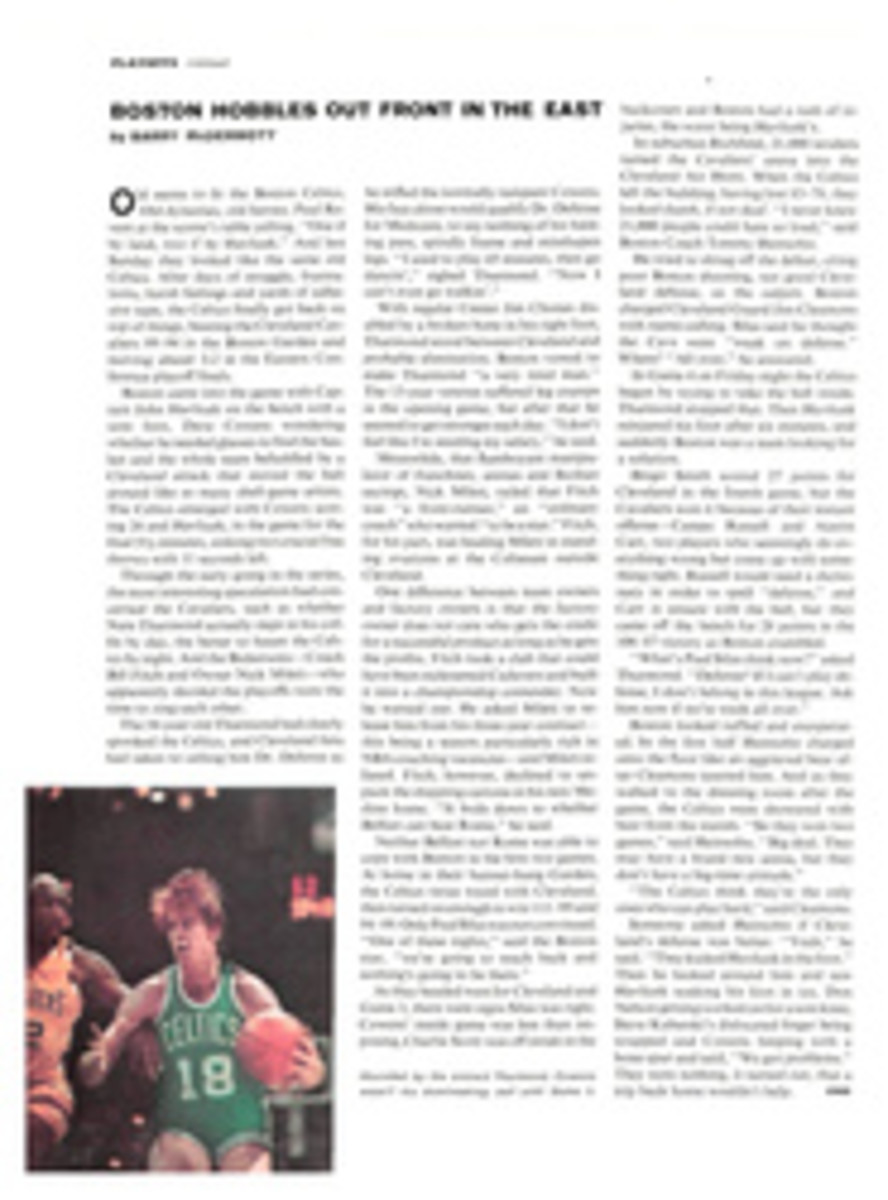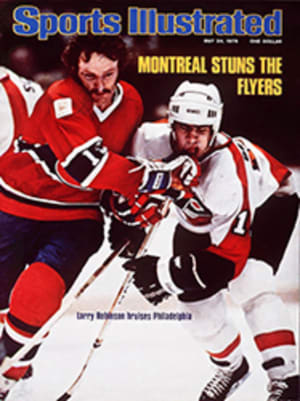
LETTER FROM THE PUBLISHER
If you had told J.D. Reed a couple of years ago that he would spend most of the spring of 1976 covering the Stanley Cup playoffs for SPORTS ILLUSTRATED, he would have been startled, to say the least. A former Guggenheim Fellow, a published poet and, until he joined SI eight months ago, a teacher of creative writing at the University of Massachusetts, Reed was accustomed to less violent forms of activity. "At a university you discuss ideas for 30 years without getting off your butt," he says.
It was an urge to get up and go that prompted Reed, who had written 12 feature stories for us as a free-lancer, to join SI's staff and request that he be assigned to cover a major sports beat.
Hockey fit the bill. It plunged Reed into a new environment of whirlwind travel, puckish personalities, fast-breaking news and overnight deadlines. His switch from the calm of the classroom to the razzmatazz of the rink culminates in this week's cover story on the Flyers-Canadiens series, which begins on page 22.
Reed admits that at first he was somewhat uncomfortable with that most common of journalistic duties, the interview. "I didn't know whether to address hockey players as Mister or call them by their first names," he says. "But it took me no time at all to learn that Andre Dupont is always Moose. How can you be formal with a guy who answers to the name of Moose?" Reed was also struck by the hockey players' appearance. "It was something of a jolt to realize that I was talking to 20 men who didn't seem to have any front teeth," he says.
At the university Reed might have begun an hour-long discussion by asking a colleague what he thought about the state of the world. That approach does not work in hockey. "A player is liable to be thinking only as far ahead as the lamb chop he is planning to order for supper," says Reed. "It's best to go into an interview with a list of specific questions in mind, or at least with some light touch that will start off a conversation."
Reed has also learned something about the art of compression. His free-lance pieces were about 5,000 words each, and he had all the time he needed to research his subjects, chew up pencils and pull at his forelock. An SI news story usually runs to about 1,500 words. "In my other articles I hadn't even gotten around to describing the sunset in that space," says Reed. "I had to teach myself how to select detail, to throw out a lot of the trivia so dear to a writer's heart."
And he has learned to listen more attentively. "If a hockey player tells me, 'I bend my stick this way,' I pay attention, because the way he bends his stick may be the reason he gets traded next year—or gets a bonus this year."
Reed, a 260-pounder, is enjoying his new role so much that he even has attempted to learn how to skate. "One weekend I sneaked off to Stowe, Vt. and took a lesson that lasted for nine minutes," he says. "The first minute I was standing, and the remaining eight I was sitting on the ice." Fortunately, he has discovered that he can cover the world of hockey without ever putting on a blade.
PHOTO
REED IN NEW CLASSROOM

